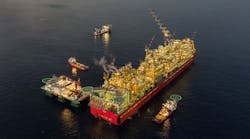Brilliant visions of digitally integrated processes have inspired us since the first “smart” transmitter (containing a microprocessor) became widely available. Initially, this chip-ware was primarily an aid for configuration—setting ranges and analog outputs, as well as containing a characterization of the sensor to improve the rangeability/turndown and accuracy of a given device. But visionaries were already imagining a day when the “intelligence” of field devices would be used for much more.
Over three decades later, your next project will most likely deploy 4-20 mA transmitters connected to a centralized DCS or logic solver. Relatively easy interconnection of household appliances like refrigerators, thermostats, lamps and media servers (television, anyone?) might lead your management to think digital integration is easy. How is it we’re still mucking around in the sloppy analog valley of despair?
It’s been about 10 years, but I remember sitting in (retired IC&E manager) Sandy Vasser’s talk on ExxonMobil’s vision for automation, and being dismayed at his assessment of the control professional’s role in Exxon projects. “Process owns the measurements,” he said. “We’re providing infrastructure.” While Sandy was doubtless at a paygrade to which I might only aspire, I was disturbed by this mundane representation of control’s contribution to the enterprise. Were we merely erectors of (electronic) structural steel or pipe supports? I was also aware of another snippet of ExxonMobil’s view of available digital integration, a perspective I also aspired to rebut.
Sandy is famous for his seminal thinking around flexible remote I/O, branded “electronic marshalling” by Emerson, and now offered in some form by many control system suppliers. Marshalling, if you’re new to the discipline, is how we describe terminating multi-pair cables in a control house, from which “scatter wire” (individual pairs) runs to various points on disparate I/O cards. Flexible remote I/O was a key component of the “DICED” strategy (auto-detect, interrogate, configure, enable, document I/O), which allows control engineers to fashion a system by selecting standard, prefabricated components from a catalog. Field devices automatically reveal their role and identity once connected to the I/O, and so on. All this speeds delivery of controls infrastructure to the project, and keeps the I&C team off the critical path. The flexible I/O permits one to address late additions and changes that are the bane of project managers.
It's interesting that the problems solved by flexible and distributed I/O were also (already) a feature of Foundation Fieldbus and Profibus PA protocols. After ExxonMobil was prompting suppliers to develop and advance electronic marshalling, Larry O’Brien, now vice president of research for ARC Advisory Group, coined the term “virtual marshalling.” Smart devices on a two-wire bus didn’t need any “marshalling” and accommodated late additions just as easily.
The success of virtual marshalling, along with “templating” field devices, was stunningly demonstrated by Shell’s Prelude floating, production, storage and offloading (FPSO) vessel. But for some reason ExxonMobil, which was also a seminal participant in the development and specification of Foundation Fieldbus H1, was never known to deploy it on a large project. Why would one of the foundational cultures of the fieldbus “vision” abandon it and seek a different solution a couple decades later?
While at school even more decades ago, I interviewed with ExxonMobil. The recruiter told me the company liked new engineers to spend a few years in the plant before aspiring to any corporate role. There was wisdom in that philosophy that escaped me in my 20s. Engineers, who’ve been immersed with their end-users as the “victims” of their projects, are much more likely to consider their pain when deploying future projects. It’s a lesson I’ve had to keep learning. ExxonMobil engineers didn’t see themselves ripping out their favorite DCS (which didn’t support fieldbus), and whose then-current support for fieldbus was a late offering. Their “Bubba” in the refinery instrument shop wasn’t going to be able to deal with it, in their view. In-plant experience had taught them, and no one wanted to own what was likely to be a struggle for the plant.
Hopefully, few of us need to revisit the notion that the shiniest, newest tech gadgetry should be undertaken warily, incrementally, and preferably with considerable end-user engagement. We can aspire for the same thing as Sandy—to be invisible. Like a good movie soundtrack, we know our controls infrastructure is a success if no one notices it!





